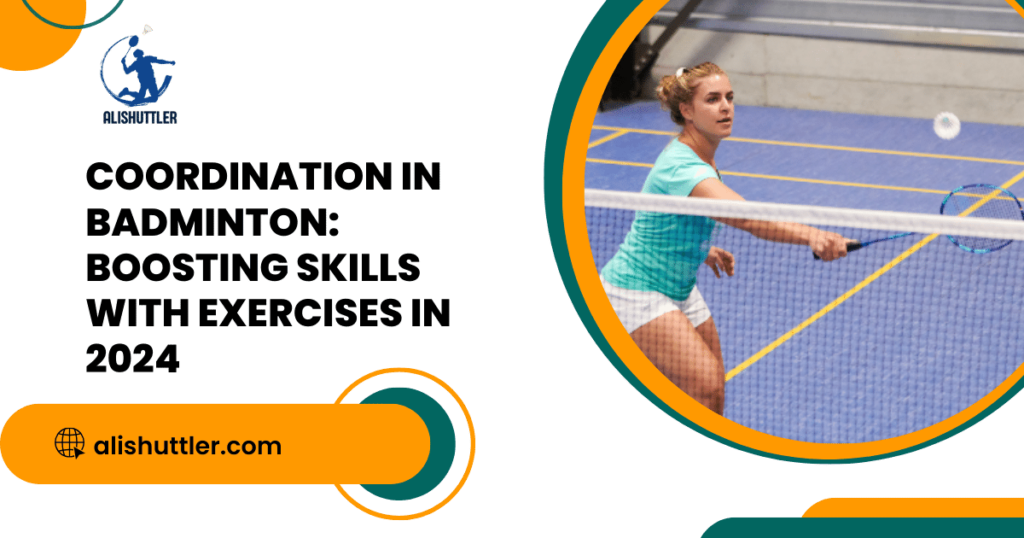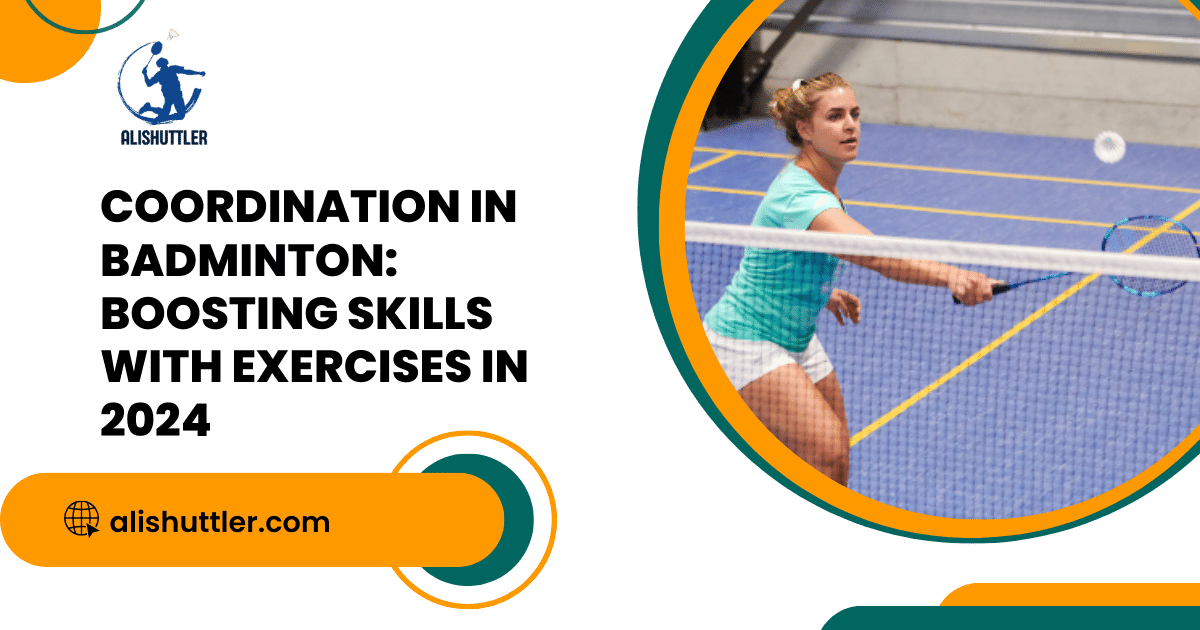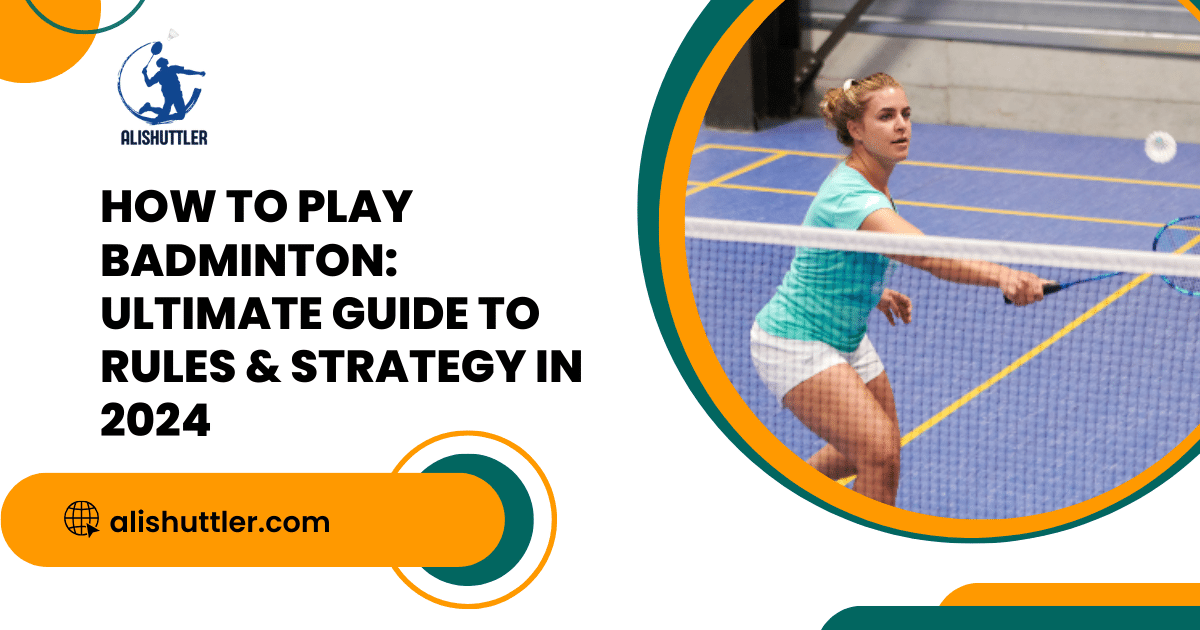Curious about how coordination impacts your badminton game? Let me guide you through the essential roles of coordination, sports performance, agility performance, physical fitness, and ball play in mastering this dynamic sport. From footwork precision to racket control, coordination is the secret ingredient for success on the court. Discover how honing your coordination skills can elevate your gameplay and give you a competitive edge against opponents. Ready to unlock your full potential in sports performance on the badminton court?
Key Takeaways
- Coordination in badminton is vital for success on the court. Understanding how different components like balance control, agility in movement, and eye-hand synchronization work together can significantly impact your performance.
- Practice balance control exercises: Strengthening your core muscles and practicing drills that challenge your stability can help improve your balance on the badminton court. For instance, standing on one leg while hitting shuttlecocks can enhance your balance and stability during gameplay.
- Enhance agility through footwork drills. Agility plays a crucial role in swiftly moving around the court to reach shots. Incorporate ladder drills, cone drills, and shuttle run exercises to improve your footwork and overall agility during matches.
- Focus on eye-hand synchronization. Develop this skill by practicing drills that involve quick reactions to shuttlecock movements. For example, engaging in shadow badminton, where you mimic playing shots without a partner, can enhance your eye-hand coordination.
- Consistent practice is the key. Improving coordination in badminton requires regular training and dedication. Set aside time each week to work on specific coordination drills and exercises to see gradual improvements in your gameplay.
- Seek guidance from a coach. A professional badminton coach specializing in sports can provide personalized feedback and guidance on how to enhance your coordination skills. Their expertise can help you identify areas for improvement, study agility, and tailor training sessions to address specific coordination weaknesses.
Understanding Coordination in Badminton
Timing
Coordination in badminton is crucial for players to perform well on the court. Timing, hand coordination, agility, and controls play a significant role in sports, ensuring that movements align perfectly with the shuttlecock’s trajectory. The ability to anticipate shots accurately enhances overall gameplay.
Movement
Efficient coordination involves swift and precise movement across the court. Participants must have agility and hand coordination to swiftly reach the shuttlecock. Proper footwork and hand-eye coordination are essential for executing shots effectively.
Adaptation
Adaptation to the shuttle speed is key in badminton coordination. Players need to adjust their positioning and timing based on the speed of the shuttlecock. This quick thinking and adjustment ensures that players can return shots efficiently.
I find that focusing on improving my timing during practice sessions has significantly enhanced my gameplay. By honing my movement coordination and agility, I can react faster during intense rallies, gaining an edge over my opponents.
Key Components of Coordination

Body Coordination
Body coordination in badminton involves the synchronized movement of different body parts to execute shots effectively. It plays a crucial role in enhancing speed and anticipation on the court. By coordinating movements such as footwork, arm swings, and body positioning, hand coordination and agility help players swiftly respond to opponents’ shots.
Adaptation to Shuttlecock Speeds and Directions
Adapting to varying shuttlecock speeds and directions is a fundamental aspect of coordination in badminton. Players must adjust their racket angle, timing, and hand coordination based on the shuttlecock’s trajectory. This requires quick decision-making, hand coordination, agility, and precise movements to ensure accurate shot placement. Successful adaptation enhances overall performance during matches.
When playing doubles, communication with your partner is key for effective coordination. By sharing strategies and signals, players can anticipate each other’s movements and cover the court efficiently. Practicing drills that focus on timing and spatial awareness can improve coordination skills significantly.
Balance Control
Importance
Balance control is crucial in badminton, as it enables players to move swiftly across the court and execute precise shots. Dynamic balance and functional balance performance are key factors that determine a player’s agility and coordination during gameplay. Players with strong balance ability can maintain stability while moving in different directions, allowing them to respond quickly to their opponent’s shots.
Movement Efficiency and Shot Accuracy
Good balance performance directly impacts a player’s movement efficiency on the court. By maintaining proper active controls over their body, players can reach for shots more effectively and cover the court with ease. dynamic balance performance contributes to shot accuracy by ensuring that players can position themselves correctly before executing a shot. A stable base enhances their ability to generate power and control the direction of the shuttlecock.
- Pros:
- Enhanced agility
- Improved shot accuracy
Tips for Improvement
To enhance balance control, players can focus on specific exercises, such as the leg standing balance test. This exercise helps strengthen the muscles involved in maintaining balance and improves overall stability on the court. Another effective method is practicing body-weight shifting drills to develop better control over movements during gameplay.
Agility in Movement

Importance
Agility is crucial in badminton, as it enables players to swiftly change directions and adjust pace during intense rallies. Players with high agility can cover the court efficiently, reaching the shuttle in time.
Benefits
Enhanced agility allows players to respond rapidly to their opponent’s shots by making quick movements. This skill is vital for maintaining control over the game and outmaneuvering opponents with strategic plays.
Exercises
To improve agility, players can incorporate drills like ladder footwork exercises and cone agility drills into their training regimen. These exercises focus on enhancing speed, quickness, and body coordination, essential for better on-court performance.
I find that practicing the hexagon agility test regularly has significantly improved my agility on the court. It has helped me anticipate shots better and react faster during matches, giving me a competitive edge against opponents.
Eye-Hand Synchronization
Importance
Eye-hand synchronization plays a vital role in badminton, enabling players to react swiftly and accurately during matches. By coordinating eyesight with hand movements, players can anticipate shots and respond effectively.
Efficient eye-and-hand coordination is essential for executing precise shots in badminton. When players track the shuttlecock with their eyes and simultaneously position their fingers to hit it, they achieve better control over the direction and speed of their shots.
Drills and Practices
- Focus on tracking the shuttlecock with your eyes as it moves across the court.
- Practice hitting the shuttlecock at different heights and angles to improve your hand-eye precision.
- Utilize drills that involve quick reactions, such as shadow badminton or rapid-fire rallies, to enhance your eye-hand synchronization.
During my training sessions, I found that incorporating visual cues into drills significantly boosted my eye-hand coordination. By focusing on specific points on the court while practicing shots, I improved my ability to align my vision with my hand movements accurately.
Improving Your Coordination
Hand Coordination
Enhancing hand coordination is crucial for better performance and accuracy in badminton. Practice exercises focusing on hand-eye coordination to improve overall motor coordination.
Consistent training with hand coordination tests can help track progress and identify areas for improvement. Incorporate activities like juggling or catching a ball to boost hand coordination skills.
Motor Skills Development
Engage in specific exercises targeting different aspects of motor skills such as agility, speed, and precision. Utilize drills that simulate game scenarios to enhance coordination under pressure.
Regular practice not only improves performance in badminton but also enhances overall sports skills and physical abilities. Strengthening motor coordination through targeted exercises leads to better performance and accuracy on the court.
Benefits of Practice
Dedicated training sessions focusing on coordination lead to significant improvements in gameplay. Consistent practice not only sharpens skills but also boosts confidence during matches.
Closing Thoughts
In badminton, coordination is the secret ingredient that elevates your game. Balance control, agility in movement, and eye-hand synchronization are the pillars of a well-coordinated player. By honing these skills, you can enhance your performance on the court and outmaneuver your opponents with finesse.

To improve your coordination, practice drills that focus on each component individually and then integrate them into your gameplay. Consistent training and a strategic approach will help you master the art of coordination in badminton. So, lace up your shoes, grab your racket, and let’s hit the court to unleash your full potential!
Frequently Asked Questions
What is coordination in badminton?
Coordination in badminton refers to the ability to harmonize different movements effectively, such as footwork, racket skills, and positioning on the court. It involves syncing various body parts to execute shots and move swiftly during gameplay.
How does balance control impact badminton performance?
Balance control plays a vital role in badminton by enhancing stability during movements like lunges, jumps, and quick directional changes. Good balance allows players to maintain proper posture, react faster, and execute shots accurately on the court.
Why is agility important in badminton?
Agility is crucial in badminton as it enables players to swiftly change direction, accelerate, decelerate, and move around the court efficiently. Enhanced agility enhances a player’s ability to reach shuttlecocks quickly, anticipate opponents’ moves, and maintain a competitive edge during rallies.
What is eye-hand synchronization in badminton?
Eye-hand synchronization involves the coordination between visual input (tracking the shuttlecock) and physical output (racket movement). It helps players hit the shuttlecock accurately by aligning their hand-eye movements effectively based on the trajectory of the shuttlecock.
How can one improve coordination in badminton?
Improving coordination in badminton requires consistent practice focusing on footwork drills, racket skills training, and overall body movement synchronization. Engaging in specific exercises that target balance control, agility enhancement, and eye-hand coordination can significantly elevate your overall performance on the court.



